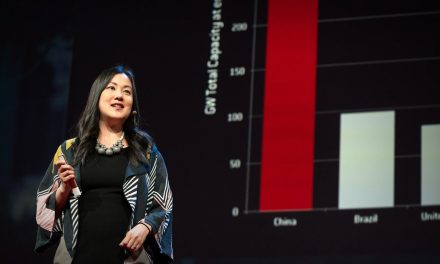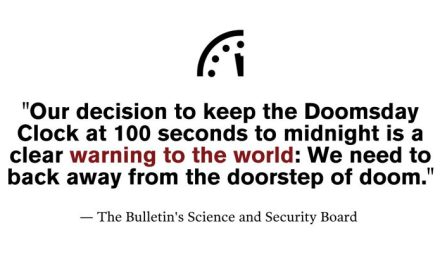Written by / Foreign Policy in Focus
It’s the best way to stop the global race to the bottom that hurts workers everywhere, not just those in low-income countries.
The International Labour Organization (ILO) is celebrating its 100th anniversary this June. In the wake of a devastating world war, its mission was transformational: to realize social justice and the rights of workers everywhere.
But now, 100 years later, exploitative working conditions remain the norm, more people than ever live in poverty, and the richest 1 percent are on track to own two-thirds of all global wealth in a decade. While no single policy could solve these problems entirely, one in particular would be a decisive step forward.
At its centenary conference, the ILO should call for a global minimum wage.
A recent global poll from the International Trade Union Confederation found that an overwhelming 84 percent of all respondents judged their national minimum wage to be insufficient for a decent life. A global minimum wage — not uniform across countries, but based on a common formula for a living wage — would raise millions out of poverty by ensuring all workers the resources necessary for a decent quality of life. But the real potential of a global minimum wage lies in its capacity to correct a dynamic that has, for decades, been eating away at the power and wellbeing of workers everywhere: the global race to the bottom.
Since the 1980s, a “neoliberal” model of globalization has empowered investors and corporations to cross borders at will in search of the most profit-friendly environments. Because capital is mobile while workers are not, nations are forced to compete to attract investment by slashing labor regulations, environmental protections, and wages. If workers in one country win improvements, mobile corporations simply move to another country where wages are lower.
A global minimum wage would set a floor to the downward spiral. Corporations could still leave for other reasons, but they would no longer have the option of moving to a country with less than livable wages.
This would dramatically strengthen the position of labor around the world, allowing workers in individual countries to fight for wage increases with less risk of capital flight. If the global minimum wage formula is tied to median wages, it may even set off a climb to the top, as rising minimums in other countries provide further leverage for workers to push for gains in their own.
In conjunction with stronger global regulations on tax havens and an alternative trade policy to protect workers and the environment, a global minimum wage might help end the race altogether.
Such a policy would benefit workers everywhere, not just those in low-income countries. For much of the 20th century, strong labor unions and the corporate class had little choice but to stay in the United States — which meant steady, middle-class manufacturing jobs with reasonable wages. With the suppression of labor rights and the rise of neoliberal globalization in the 1980s, corporations were suddenly free to leave for countries where wages were lower. This shift in corporate power is one of the major drivers behind the decline in American manufacturing. While a global minimum wage may not reverse the trend entirely, it would help stem the tide.
Importantly, it would do so without appealing to nationalism. Right-wing demagogues from Donald Trump in the United States to Marine Le Pen in France to Jair Bolsonaro in Brazil capitalize on the failures of the neoliberal global system by scapegoating workers in other countries. Even many erstwhile progressives have fallen into the nationalist trap.
A campaign for a global minimum wage, by contrast, would expose the reality: that workers sharemore interests with other workers across borders than they do with capital in their given country. Such a movement would help catalyze global solidarity, and build the working-class power necessary to achieve any number of other global goals — including an alternative trade policy and a New Bretton Woods.
There is no doubt that the realization of a global minimum wage faces many obstacles.
Determining how it would actually work – from calculating the actual wage to defining an enforcement mechanism — is crucial. Some have proposed a simple formula based on a percentage of national median wage. Others suggest a more complex measurement that accounts for cost of living and national living standards. Implementation may be modeled on international trade law, with a body like the World Trade Organization acting as a forum for multilateral agreements on targets, and an arbiter of state-state disputes. Such technical questions present challenges, but they are not insurmountable.
More difficult is the building of the necessary political will. But there’s precedent for global institutional change of this scale. From the creation of the ILO after the First World War to the United Nations after the Second, moments of crisis breed political opportunities. With the neoliberal world order teetering on the edge, right-wing nationalism on the rise, and climate catastrophe fueled by and fueling both, this is definitively such a moment.
Respected academics from Thomas Palley to Jason Hickel to Nobel-Prize winner Muhammad Yunusare already vocal proponents of a global minimum wage. At the grassroots level, the International Convention for a Global Minimum Wage, the Asia Floor Wage Alliance, and Justice Is Global are pushing the policy into the mainstream. Left-leaning parties in the EU have proposed a continental version. And existing campaigns, such as those for a Global Green New Deal and a New Social Contract, could fittingly incorporate a global minimum wage as a part of their program. The movement for a GMW has already begun.
On the 100th anniversary of its creation, the ILO has a unique opportunity to become a leader in this nascent movement. By calling for a global minimum wage, the ILO would be taking a crucial step forward in its mission of global social justice as it enters another century.














